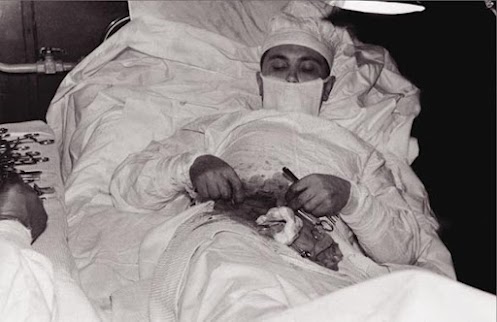A tribute to Neil Armstrong by Ricky Cadden
Neil Armstrong passed away this weekend.
I wasn’t alive when Neil Armstrong walked on the moon – in fact, I
don’t even believe that my parents were married at that point in time.
However, I’ve known Neil Armstrong’s name for as long as I can remember.
He was the first man to walk on the moon. THE MOON. Amazing.
From everything I’ve learned, the 1960s were a crazy time in American
history, with the nation alive and full of energy – indeed, lots of
projects that built this country were seemingly started in the first
half of the century, so that the early part of the second half was full
of achievement, especially in the area of new frontiers.
Space is something that boggles my mind. It’s too big for me to
really grasp everything that’s out there. I can see it, laying by a
campfire in the middle of nowhere of Texas country, but from what I’ve
been taught, that’s just a part of it, and it’s a delay, at that. The
stars that we see today, apparently, may not even exist any longer, as
it takes light a certain amount of time to travel such distances.
| English: Signature of Neil Armstrong. (Photo credit: Wikipedia) |
But Neil, Neil walked on the moon. This makes part of me sad, too.
Since then, have we really come that far, as a nation? We certainly
haven’t sent more missions to the moon, that’s for sure. We’ve been more
earthly-focused, by my estimation. We have made strides, certainly –
we’ve got the International Space Station, though honestly I couldn’t
tell you what’s going on up there, or if it’s still, in fact, UP there.
We did land on Mars – a few times now. Just robotic creatures, at this
point, no men. I’m glad that Neil Armstrong was alive long enough to see
us land on Mars.
I hope that as my daughter grows up, we’re a country and a people who
look towards the unknown with anxiety, excitement. I hope she grows up
learning that you can, in fact, do things that many thought (and still,
to this day, believe) were impossible. I hope that in the next 20 years,
a trip to space isn’t a crazy idea for a weekend getaway. I’d love to
be able to introduce my daughter to the Sea of Tranquility in the same
month I show her the beauty of East Texas.
In any case, I hope you took a minute to reflect on the passing of
Neil Armstrong this weekend, and wonder what you’ve been focused on
lately? In the 1960′s, the brightest minds in our world were putting a
man on the moon. In 2012, I’m afraid that some of the brightest minds in
our world are trying to figure out the best way to get you to click on
an ad. I hope I’m wrong. I hope we never stop wanting to explore.








